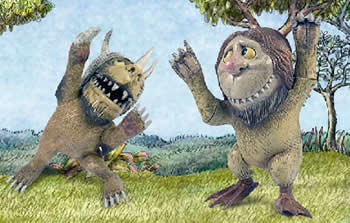Create a picture book
Look at these characters (you can click and drag your mouse to move them) and practise writing dialogue.

Create a title page for your story in the My Picture Book Word document. Include the story title, your name as author, and a suitable image.
Note the background in the above characters’ activity. Think about how it has been composed: the use of shape and colour and perspective. Create a background for your character. Here are some ways you could create your background:
-
Draw your own backgrounds and scan or photograph them.
-
Use Google image search to find background scenes.
-
Enhance or edit background images using Adobe Photoshop Elements.
Add your background images to your My Picture Book Word document.
Now that you have your character and setting, create the narrative (or story).
Write the narrative for your picture book in your My Picture Book Word document. Make a new page in the Word document for each page of your story and add the narrative.
You now have to assemble your picture book. For each page of the book, add an appropriate background image and character images.
If you created models of your characters, you could pose them against a paper background (which you could paint or create using collage) or a background image on a classmate’s laptop screen. Then you can take a photo using the laptop webcam and Lenovo EasyCapture.
Once you have assembled all of the pages for your picture book, you can publish it as a PDF book:
-
In your My Picture Book Word document, go to the Acrobat tab.
-
In the Create Adobe PDF group, click on Create PDF.
-
In the save dialogue box, click on the Options button.
-
Change the Page range to only include the story pages in your My Picture Book Word document > OK button > Save button.
You can also include audio in your picture book. Audio can include voice, music and sound effects. Here’s how you do it:
-
Use Audacity to record a reading of the text, which may include the use of a different voice for each character. Save the audio for each page of the picture book as a separate MP3 file.
-
Open the PDF version of your picture book in Adobe Acrobat Pro.
-
Go to the first story page in your picture book, then select Tools menu > Multimedia > Sound Tool.
-
Draw a box on the PDF page where you want the audio ‘play’ button to appear > add your MP3 file for that page.
-
Repeat this process for each page of your picture book.
You can also include music and sound effects in your Audacity recordings.
Music and sound effect websites
-
Jamendo artists allow anyone to download and share their music. It is free, legal and unlimited.
-
Wavcentral has free sound effects and music.